- Home
- Edward Lee
Buttermilk Graffiti Page 5
Buttermilk Graffiti Read online
Page 5
I walk to the Gaelic Club, where I find Jack Brady. I ask him what he thinks of the Cambodians. His answer surprises me. He elaborates for a while about growing up in the Acre. He tells me about all the abuse and oppression he had to deal with from the English and the fucks who wanted to control all the money. He and every Irishman in Lowell had to fight tooth and nail for every piece of their America. He witnessed the same thing with the Italians, the Greeks, the Portuguese, the Lithuanians, the Poles, and on and on. The Gaelic Club was the first private Irish club in Lowell. He is very proud of that. He is unsentimental about boxing. Lowell, he says, will probably never produce another great Irish boxer. If you were Irish and at all smart, well, you got yourself a good job or you got yourself out of Lowell. He knows that the black-and-white photos that line the wall behind his bar represent the glory days of Lowell, but he also remembers the pain and violence of those days.
Jack refuses to watch a fight ever again. He seems torn between the history he loves, tales of fighters such as Phinney Boyle and Larry Carney and Micky Ward, and not wanting to be a sentimental ghost. The Cambodians? They are just the next immigrant group coming down the pipeline. They go to school. They work hard. They come to his bar, and they are respectful. They will leave their mark on Lowell, too, just not in the ring.
I ask Jack if he liked the movie The Fighter. Yes, he did. It was accurate, he says. It had heart. All over town, if you go into Irish bars, there are photos of Mark Wahlberg and Amy Adams posing with the locals. I don’t know what it means to be Irish American, but as I listen to Jack Brady talk, I get lost, and for a moment, I feel the struggle of Irish Americans, their tenacity, their love for Van Morrison, their passion, their fight. Jack Brady’s eyes sparkle with it. When he passes, we will lose a great spirit and a respected man. We will lose a rare and real piece of American history.
He and I talk some more, and then I notice a young Cambodian girl in her twenties downing a shot of Bushmills with a bunch of young Irish American men. She is swaying her hips to U2’s “Bullet the Blue Sky” on the jukebox. When she talks, she has the accent of a Lowell native; it is hard around the edges. It is baritone. It doesn’t have the lightness of Denise’s sentences. Sam has never seen The Fighter.
Amok Trey
This is a creamy and aromatic fish curry wrapped in a banana leaf. It is surprisingly easy to make at home. Wait until your guests are seated and open the banana leaf packets right in front of them; it’s impressive. The sauce is mild yet perfumed with flavor. I use catfish here, but another firm-fleshed fish such as halibut or cod would work equally well.
Serve with steamed rice and Asian-style pickles.
Serves 4 as a main course
Four 12-inch squares banana leaf
spice paste
12 kaffir lime leaves, chopped very fine
1 shallot, minced
2 lemongrass stalks, tough outer leaves removed
5 garlic cloves
1 lime
1 tablespoon grated fresh ginger
2½ tablespoons fish sauce
2 teaspoons pure chile powder
2 teaspoons shrimp paste
2 teaspoons dark brown sugar
1 teaspoon ground turmeric
1 teaspoon kosher salt
1½ cups coconut milk
Four 4-ounce catfish fillets
Kosher salt
Bring a large pot of water to a boil. Add one or two of the banana leaves, and cook for 5 minutes, or until softened and pliable. Remove and drain on a paper towel. Repeat with the remaining leaves.
Pour off most of the water and set a steamer basket in the pot; the water should come to just below the steamer basket.
To make the spice paste: Put the lime leaves and shallot in a small bowl. Using a Microplane, grate the lemongrass and garlic into the bowl. Grate the zest of the lime into the bowl, then halve the lime and squeeze in the juice. Add the grated ginger, then add the fish sauce, chile powder, shrimp paste, brown sugar, turmeric, and salt. Transfer the mixture to a large mortar and pound it to a paste with the pestle. (If you don’t have a mortar and pestle, you can also do this by smashing the ingredients with the side of your knife against a cutting board.)
Transfer the paste to a medium saucepan, add the coconut milk, and bring to a simmer over low heat, then simmer for 3 minutes. Remove from the heat.
Season the catfish generously with salt. Place one banana leaf on a cutting board and scoop ⅓ cup of the coconut sauce onto the middle of the leaf. Place a catfish fillet on top and add another ⅓ cup of the sauce. Wrap the fish in the banana leaf, folding over the top and bottom and then the sides, and thread a wooden skewer through the leaf to keep the packet closed. Repeat with the remaining fillets and sauce.
Bring the water in the steamer to a low simmer. Transfer the fish packets to the steamer basket, cover the pot, and steam for 30 minutes.
Remove the packets from the steamer and carefully transfer to serving plates. Set the plates in front of your guests and allow them to open the packets themselves.
Pork Lab with Fried Egg on Popcorn Bread
Cambodian lab is made with meat that is cooked, then marinated with spices and chilled. Similar dishes are found in Thailand and Indonesia. Cambodian lab (sometimes spelled laab or larb or lahb) is typically made with pork or beef, or sometimes duck, and eaten as lettuce wraps. This one is like a Southeast Asian version of hash on toast: basically an open-faced sandwich with the lab piled up on popcorn bread and a fried egg on top. The popcorn bread, which I came up with because I love the tiny bits of detritus at the bottom of a bag of popcorn, reminds me of Irish soda bread, with a slightly nuttier flavor.
Serves 4 as a main course
pork lab
2 teaspoons canola oil
1 pound ground pork
4 garlic cloves, grated (use a Microplane)
¼ cup water
2 tablespoons soy sauce
½ cup minced shallots
2 tablespoons minced seeded jalapeño pepper
2 tablespoons grated lemongrass (white part only)
1 tablespoon grated fresh ginger
¼ cup grated cucumber
Grated zest and juice of 4 limes
1½ tablespoons fish sauce
1 teaspoon sugar
½ teaspoon ground cumin
¼ teaspoon sea salt, or to taste
¼ cup chopped scallion greens
¼ cup chopped fresh cilantro
2 tablespoons chopped fresh mint
4 tablespoons unsalted butter
4 large eggs
Kosher salt and freshly ground black pepper
Four ½-inch-thick slices Popcorn Bread
To make the lab: In a large skillet, heat the canola oil over medium heat. Add the ground pork and cook for 3 to 4 minutes, stirring vigorously to break up the meat; do not let it brown. Add the garlic, water, and soy sauce and simmer until the pork is cooked through, about 5 minutes. Transfer the pork to a large bowl and let cool.
Add the shallots, jalapeño, lemongrass, and ginger to the pork and mix gently. Wrap the grated cucumber in a paper towel and squeeze out the excess liquid, then add the cucumber to the bowl. Add the lime zest, lime juice, fish sauce, sugar, cumin, and sea salt and mix well. Add the scallions, cilantro, and mint and mix again, then taste and adjust the salt to your liking. Cover and refrigerate for at least 1 hour, or as long as overnight.
When ready to serve, in a large skillet, melt the butter over high heat. Crack the eggs into the foaming butter. Cook for 1 minute. Put a lid on the pan and cook for another minute. Lift the eggs out of the pan with a spatula and set them on a plate. Season with salt and pepper.
Heat another large skillet over high heat. Butter the slices of popcorn bread on both sides and toast in the hot skillet, turning once, until lightly browned on both si
des, about 1 minute per side. Arrange on individual plates.
Add the pork lab to the hot skillet and stir just until warmed through. Top the toast with the lab and then the fried eggs. Serve immediately.
Popcorn Bread | Makes 2 loaves
½ cup water
½ cup milk
1 tablespoon active dry yeast
2 tablespoons sugar
2 cups popped popcorn
2 teaspoons kosher salt
2 large eggs
5⅓ tablespoons unsalted butter, melted and cooled
1 tablespoon melted bacon fat or pork fat
3 cups all-purpose flour
In a small saucepan, combine the water and milk and heat gently to 112°F. Transfer to a small bowl and stir in the yeast and sugar. Let stand for 10 minutes, or until foamy.
Pulse the popcorn in a food processor until broken down to the consistency of cornmeal. Transfer to a large bowl.
Add the yeast mixture and salt to the ground popcorn. Stir in the eggs, melted butter, and bacon fat. While stirring with a rubber spatula, gradually add the flour until a rough, shaggy dough forms.
Transfer the dough to a lightly floured work surface and knead for 5 minutes, until a loose wet dough forms. Transfer to a lightly greased large bowl, cover with plastic wrap, and let rise in a warm spot for 30 minutes. It will almost double in size.
Punch down the dough and let it rise once more, about 30 minutes.
Grease two 8½-by-4½-inch bread pans. Turn the dough out onto an unfloured work surface and divide it into 2 equal pieces. Shape each piece into a loaf and place in the prepared pans. Let rise for about 1 hour, until doubled in size.
Preheat the oven to 350°F.
Bake the loaves for 35 to 40 minutes, until golden brown. Let the bread cool in the pans for 10 minutes, then remove from the pans and cool to room temperature on a wire rack.
Chapter 3
The Unfamiliar Noodle
Take a dish you know well, a dish you’ve eaten a hundred times. Now change just one ingredient. Would you still recognize the dish? What if that one ingredient changed everything you thought was familiar? What if the new taste blew your mind? Our bond with our favorite foods is an unsteady balancing act, and even the slightest change can trigger a deep uneasiness. It is like when a coworker you have known for years walks in with a totally new hairdo and you don’t recognize her. Her voice is the same, her clothes, her demeanor, but as you listen to her speak, you can’t help but think, Do I really know this person? It makes you question yourself. For me, it is one thing when this happens to a person, but quite another when it happens to a beloved plate of food. I become unhinged. It rattles the foundation of my universe. People, you see, are fickle. Food, we hope, is reliable, predictable. But on a frosty fall evening at Kashkar Café in Brighton Beach, Brooklyn, I am faced with the paralyzing fear of the unknown. It happens over a bowl of noodles.
Kashkar Café serves Uyghur cuisine. If you don’t know what that it is, don’t worry; neither do most of the people on the planet. The Uyghur are descended from a small tribal population in the northwesternmost edge of mainland China, residing primarily in the area known as Xinjiang Uyghur Autonomous Region, a vast nomadic land that borders Russia, Kazakhstan, Kyrgyzstan, Afghanistan, Pakistan, and India. Though the Uyghur are a part of China, they are not really Chinese in the way a person from Shanghai or Guangzhou is. They fall into a demographic known as “Central Asian,” a name that refers to a place locked in time and shrouded in mystery. The Uyghur people are Muslim. They have their own language and their own customs, some of which are depicted in a large tapestry that hangs on the wall of this unassuming little eight-table café. The restaurant sits at the end of a small stretch of Brighton Beach Avenue that is crowded with Russian markets, delicatessens, and fruit stands. If you happened to walk by without paying attention, Kashkar Café would not stand out as anything unique, save perhaps for the small star-and-crescent icon above the name, symbolizing the Muslim faith.
Inside, the chef and patriarch of the family, Yousef Umidjon, sits at a table near the kitchen wearing the traditional taqiyah on his graying head as he silently eats dinner, his fingers roaming gently over a plate of lamb and cabbage. I can tell from the way he motions with his hands that he does not speak English. His eyes are opaque; they do not wander, they are not inquisitive. His son and daughter, both in their twenties, bounce around the restaurant, taking orders and lighting fires in the kitchen. But Yousef does not move. He is as still as a bear in winter. I sit down at a table by the window, my eyes trained on him, in case he looks up.
Brighton Beach has been many things to many people over the years. Jews, Poles, Italians, Hispanics, and Russians have all called this place home, and now it is the same with the new immigrants from Central Asia, mostly Uzbekistan but also the surrounding countries.
I grew up in Canarsie, just north of here. My neighbors were Indians and Jamaicans and Italians and Jews. Later, I would go to a “smart” high school in the Bronx, and during my sophomore year, we read Neil Simon’s play Brighton Beach Memoirs, the coming-of-age story of Eugene Jerome and his Polish-Jewish family during the Great Depression. I argued with my English teacher about how I had lived nearby and had never met anyone like Eugene. I was lectured mercilessly on the meaning of the word memoir.
In the late 1970s, Brighton Beach was rife with crime and drugs, a ramshackle neighborhood as colorful as it was hostile. Every summer, my family would take day trips to Coney Island, walking the length of the boardwalk to Brighton Beach. I remember eating Nathan’s hot dogs with yellow mustard, which always got sand in it no matter how much I tried to block the wind with my back. It was on this beach, more cluttered with soda cans than seashells, that we would have our loud, awkward family fights in Korean. My sister always managed to roam away and make friends with complete strangers. I loved watching her and the other shrieking teenagers on the Luna Park rides I was never allowed to get near. I loved the aroma of hot dogs simmering in a toxic bath of their own pollution, the coconut-scented Coppertone suntan lotion, the empty Budweiser cans, and the melting clouds of cotton candy picking up the salty air of a gray-blue ocean whose only purpose seemed to be to make children laugh. Looking back on it now, I’m pretty sure the place was a poor man’s idea of a beach getaway, but to me it was paradise. We would stay until sundown. My sister and I would run as fast as we could, hoping to chase away the fading sun and make summer last just a few more minutes. For me, it was the prettiest place in the world. I think we stopped going there when I was nine.
I can remember the early influx of Russians, who were just settling into Brighton Beach in the 1980s. They were new but unafraid, aggressive, proud. They wore sweat suits and leather. They were flashy and drove nice cars. They were different from the Italian and Polish immigrants already there, and without knowing the details, we knew to avoid them. The “Russian Mafia” was something we’d been warned about.
We moved to Manhattan when I was ten, and I stayed away from that part of Brooklyn for the rest of my teen years. We were lucky to leave Brooklyn, my parents told me. Many families couldn’t. My parents’ lives there had been a week-to-week struggle, never getting ahead, just barely getting by. So a nostalgia for Brooklyn was never instilled in me. It had simply been a stop on the road to middle-class prosperity.
This is my first trip back to the old neighborhood. I’m sitting on the B train. By the second stop in Brooklyn, all the hipsters have gotten off. What are left are the working-class immigrants making the long commute to East Brooklyn. They are from everywhere: Colombia, Haiti, Jamaica, Pakistan, Puerto Rico. They are Jews and Christians and Muslims. As the subway train emerges from the pitch-black tunnel, I see the rooftops of warehouses streaming by, building façades painted with graffiti. The subway cars are modern and clean now, but the view from the windows hasn’t changed: low-income housing, junkyards, billboards. The expressionl
ess faces of the subway riders are familiar. Showing no expression is a way to be invisible, to get through the ride without incident. No one makes eye contact, and the ones who do have a stare so empty that they may as well be blind. So much here is still the same.
But Brighton Beach has changed, a lot. As soon as I get off the subway, I’m thrust into a world of Russian dialects. The markets are bursting with smoked fish and cured meats, pancakes and myriad potato concoctions, tins of every kind of pickle your imagination can dream up, walls of caviar and cream cheeses. Russian food never makes the lists of top cuisines in the world, but to wander through these markets, you quickly see that those lists are wrong. This is ridiculously good stuff: everything from pelmenli to vaereniki, blini to coulibiac, from different-colored borschts to jellied fish and meats. And the pickles! Oh my lord, the pickles and slaws and relishes of every color and variety. To truly understand the breadth of Russian food, I recommend going to any of the many markets in Brighton Beach that have steam table lunches set out daily. Gourmanoff, in the Master Theater, is a ritzy upscale market that has everything from Slavic specialties to American favorites, but don’t miss the array of foods laid out on the steam table at Gastronom Arkadia, where they have the best chicken bitochkis and slaws.
The best restaurant in Brighton Beach for my money is Ocean View Café, which, ironically, does not have an ocean view. The green borscht will instantly become your favorite comfort food of all time, and the café’s platter of smoked fish is so oily and decadent that your hair will shine for weeks. The stuffed cabbage is the best I’ve ever had, but the one dish that makes me blush with excitement is the pickled watermelon. Living where I do, in the American South, I’m accustomed to eating pickled watermelon rinds all summer long, but I never thought to pickle the entire watermelon, flesh and all. The plate comes out with red triangles of watermelon that have been brined for so long, the color and texture turn into something very similar to ahi tuna. It is rosy red and dense, completely limp, and whatever word is the opposite of refreshing. The watermelon is redolent of dill, garlic, and chile, and packs a punch of sourness so strong it makes your nose hairs curl. But if you are a lover of pickles, this is the best thing you will ever eat. I consume an entire plate of it with nothing more than a buttered dinner roll for relief.

 In the Year of Our Lord 2202
In the Year of Our Lord 2202 The Minotauress
The Minotauress Terra Insanus
Terra Insanus The Stickmen
The Stickmen Flesh Gothic by Edward Lee
Flesh Gothic by Edward Lee Family Tradition
Family Tradition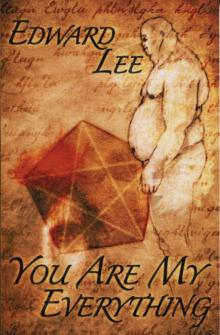 You Are My Everything
You Are My Everything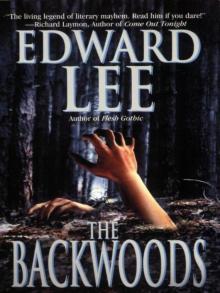 The Backwoods
The Backwoods The Teratologist
The Teratologist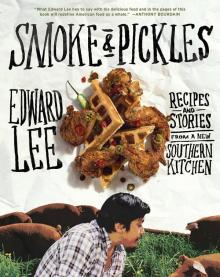 Smoke and Pickles
Smoke and Pickles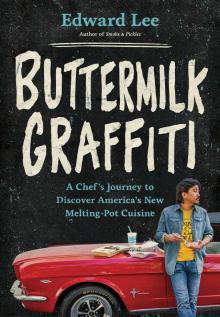 Buttermilk Graffiti
Buttermilk Graffiti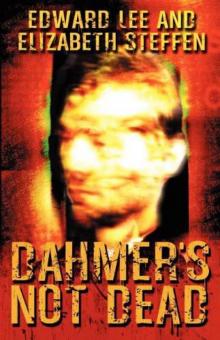 Dahmer's Not Dead
Dahmer's Not Dead Quest for Sex, Truth & Reality
Quest for Sex, Truth & Reality The Innswich Horror
The Innswich Horror Brides Of The Impaler
Brides Of The Impaler Goon
Goon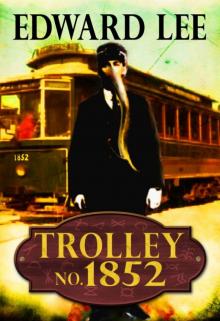 Trolley No. 1852
Trolley No. 1852 Sacrifice
Sacrifice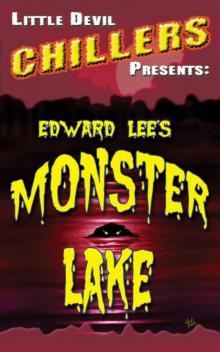 Monster Lake
Monster Lake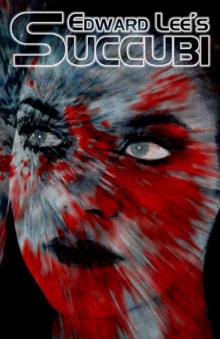 Succubi
Succubi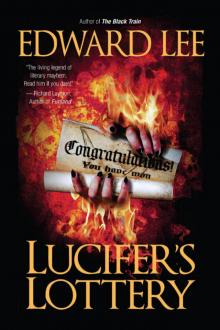 Lucifer's Lottery
Lucifer's Lottery Monstrosity
Monstrosity The House
The House The Dunwich Romance
The Dunwich Romance Operator B
Operator B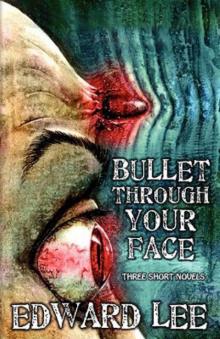 Bullet Through Your Face (improved format)
Bullet Through Your Face (improved format)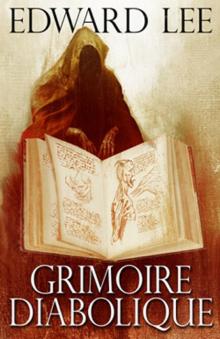 Grimoire Diabolique
Grimoire Diabolique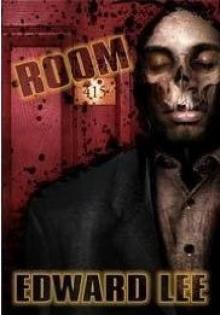 Room 415
Room 415 The Messenger (2011 reformat)
The Messenger (2011 reformat) Incubi
Incubi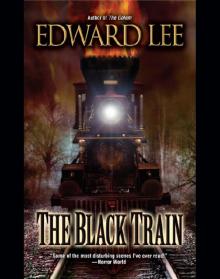 The Black Train
The Black Train House Infernal by Edward Lee
House Infernal by Edward Lee City Infernal
City Infernal Creekers
Creekers The Haunter Of The Threshold
The Haunter Of The Threshold Mangled Meat
Mangled Meat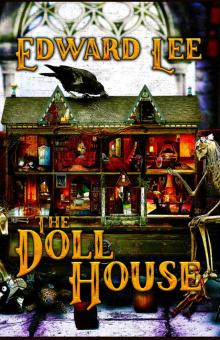 The Doll House
The Doll House Header 2
Header 2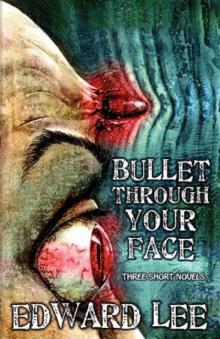 Bullet Through Your Face (reformatted)
Bullet Through Your Face (reformatted) Header 3
Header 3 Infernal Angel
Infernal Angel Pages Torn From a Travel Journal
Pages Torn From a Travel Journal Edward Lee: Selected Stories
Edward Lee: Selected Stories The Bighead
The Bighead The Chosen
The Chosen